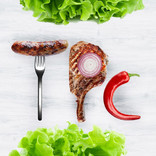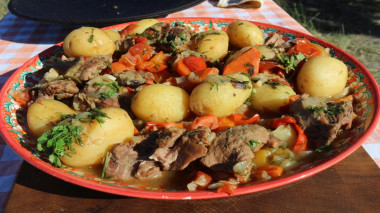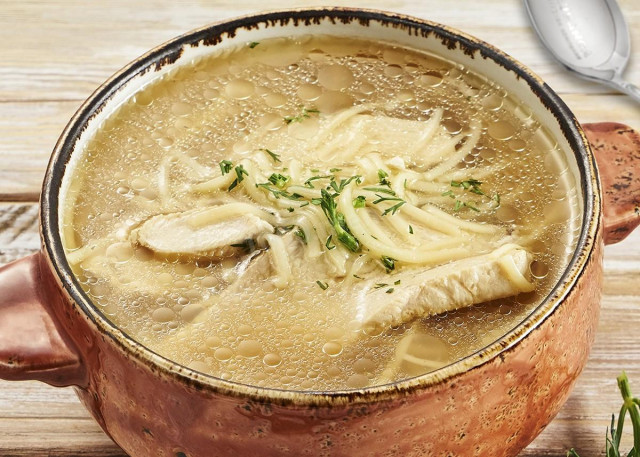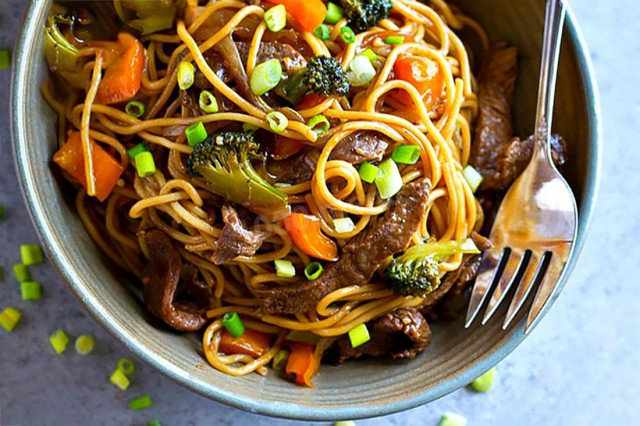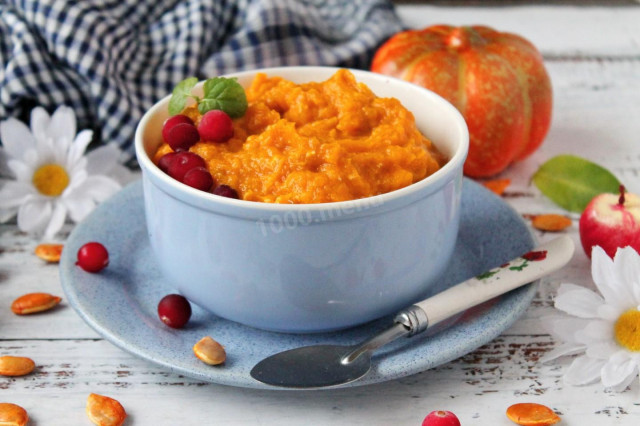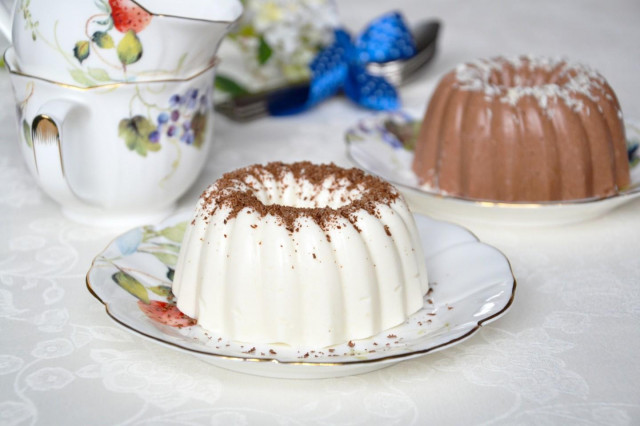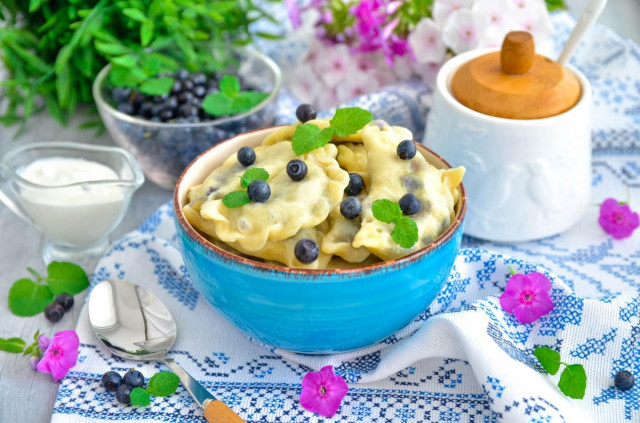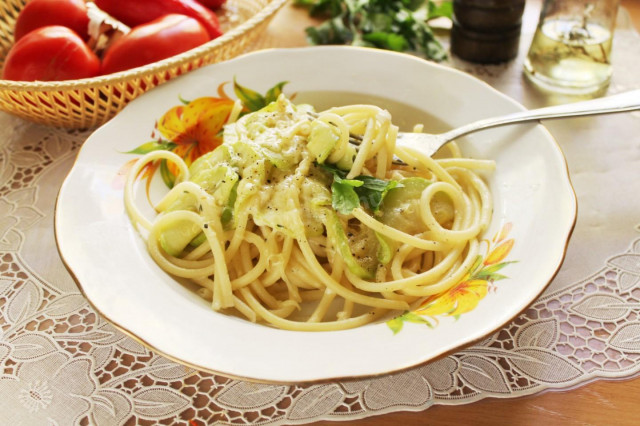Composition / ingredients
Step-by-step cooking
Step 1:
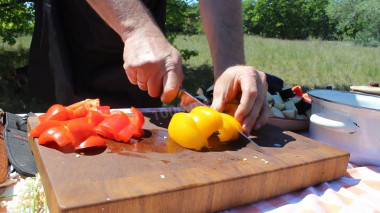
How to make hashlama in Armenian from beef on beer in a cauldron? Hashlama is prepared very simply. Cut all the vegetables into large chunks
Step 2:
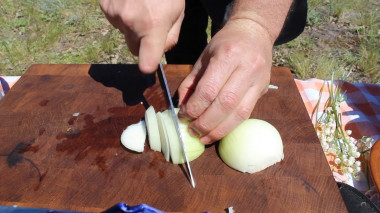
Cut the onion into half rings
Step 3:
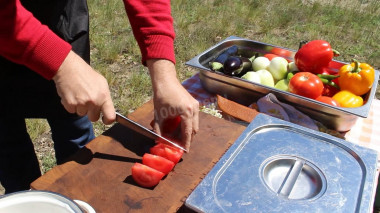
Tomato into large slices
Step 4:
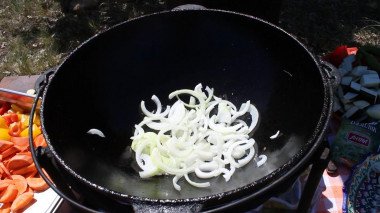
Put a thin layer of onion on the bottom of the cauldron
Step 5:
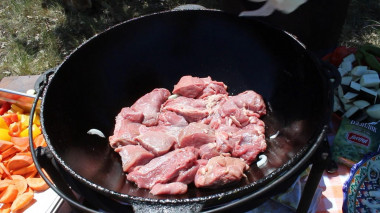
Put a layer of meat on top of it. Fatter meat is selected for this first layer
Step 6:
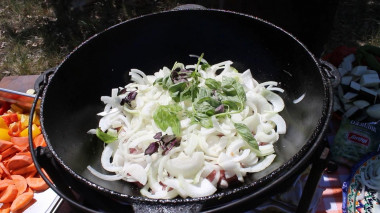
Next, lay the onion again, add salt and pepper on top to your liking and lay the green basil
Step 7:
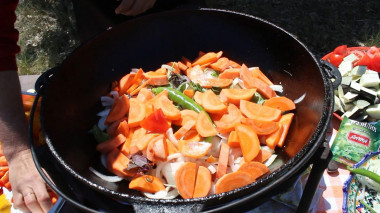
Next layer of carrots with hot pepper
Step 8:
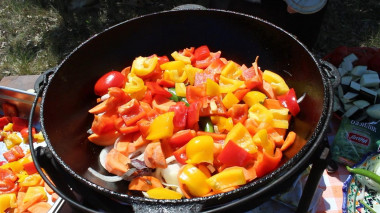
Layer of bell pepper, which is also salted
Step 9:
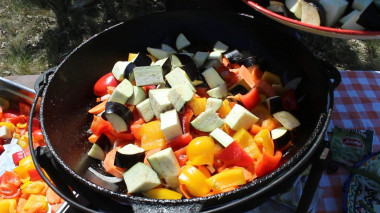
Next eggplant
Step 10:
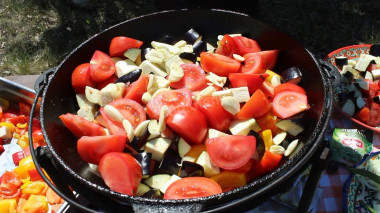
Top with eggplant tomatoes with garlic
Step 11:
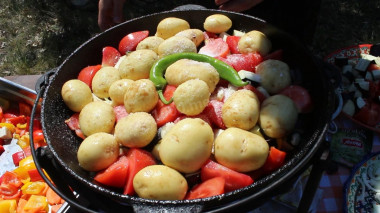
A layer of potatoes with hot pepper, which is also salted
Step 12:
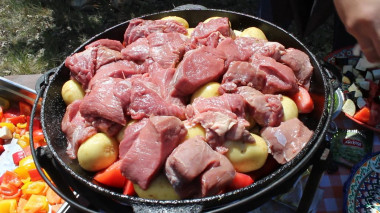
Second layer of meat
Step 13:
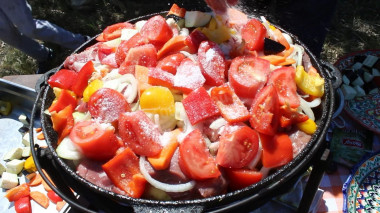
Top the meat with the remaining pepper, onion, tomatoes and eggplant. Season with salt, pepper and sprinkle with dry basil, it is better to put fresh
Step 14:
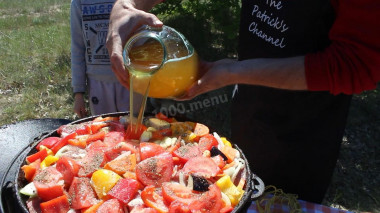
Pour a liter of beer over all the ingredients placed in the cauldron
Step 15:
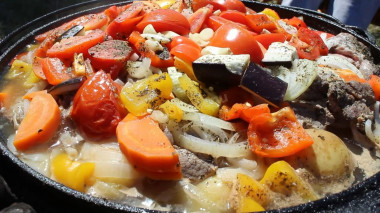
Cover with a lid and put on a very low heat to languish for three hours
Step 16:
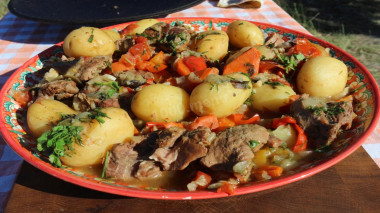
After the specified time, the dish will be ready
Armenian hashlama differs from the recipes of the peoples of the Caucasus and Transcaucasia by the use of beer. Therefore, hashlama on beer differs from others in its interesting taste and smell. The smell of hops and bread gives beer to this dish, although the principle of cooking hashlama in a cauldron is the same. The ingredients are the same. The dish turns out to be very satisfying, able to feed a large company. According to the same principle, you can cook this dish on a conventional gas or electric stove. Vegetables can be selected, if necessary, to your liking. Of the ingredients, I want to draw attention to the use of eggplant. Some varieties of this vegetable have bitterness, so before purchasing it for a dish, you need to ask about a specific variety. Not everyone is bitter. If it is bitter, it should be soaked for about one hour in clean water. When serving a dish, if a lot of broth has formed in the cauldron, it can be served separately from vegetables. It will be more original this way. If you want to cook all this on a home stove or a slow cooker, reduce the ingredients proportionally and set the appliance to languish mode.
Since the degree of salinity, sweetness, bitterness, sharpness, acid, burning is individual for everyone, always add spices, spices and seasonings, focusing on your taste! If you put some of the seasonings for the first time, then keep in mind that there are spices that it is especially important not to shift (for example, chili pepper).
Please note that in some cases there is no need to remove the bitterness from eggplants - usually young vegetables are not bitter, as well as some special varieties of them.
Caloric content of the products possible in the composition of the dish
- Onion - 41 kcal/100g
- Ripe potatoes - 80 kcal/100g
- Baked potatoes - 70 kcal/100g
- Mashed potatoes - 380 kcal/100g
- Boiled potatoes - 82 kcal/100g
- Potatoes in uniform - 74 kcal/100g
- Fried potatoes - 192 kcal/100g
- Tomatoes - 23 kcal/100g
- Melted beef fat - 871 kcal/100g
- Fat beef - 171 kcal/100g
- Lean beef - 158 kcal/100g
- Beef brisket - 217 kcal/100g
- Beef - okovalok - 380 kcal/100g
- Beef - lean roast - 200 kcal/100g
- Beef shoulder - 137 kcal/100g
- Beef - ribs - 233 kcal/100g
- Beef - ham - 104 kcal/100g
- Beef - tail - 184 kcal/100g
- Boiled ham - 269 kcal/100g
- Beef corned beef - 216 kcal/100g
- Sweet pepper - 27 kcal/100g
- Carrots - 33 kcal/100g
- Dried carrots - 275 kcal/100g
- Boiled carrots - 25 kcal/100g
- Eggplant - 24 kcal/100g
- Light beer - 50 kcal/100g
- Non-alcoholic beer - 33 kcal/100g
- Strong beer - 150 kcal/100g
- Dark beer - 74 kcal/100g
- Beer - 50 kcal/100g
- Fresh basil - 27 kcal/100g
- Dried basil - 251 kcal/100g
- Ground black pepper - 255 kcal/100g
- Hot capsicum - 40 kcal/100g
- Salt - 0 kcal/100g
